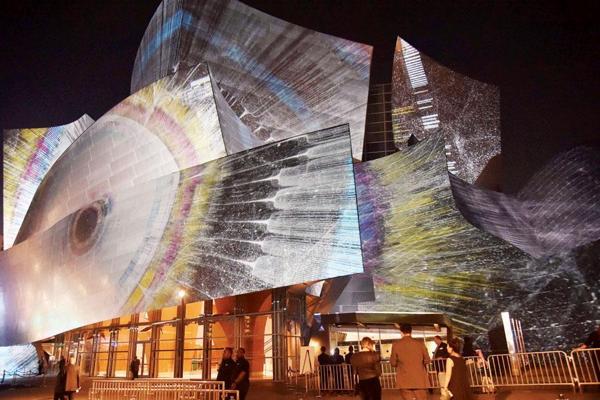Creating a poetic life with artificial intelligence
Hatice Utkan Özden


Refik Anadol starts his artworks with a question. His main concern is what it means to be a human in the 21st century. His fascination begins with a question, as he thinks of what he can do with the current technological developments and the limitless power of artificial intelligence. But he is always after a certain feeling and creating poetic works. What he does is to fill his technological works with feelings and poetry.
His unstoppable curiosity about life with technology is no coincidence, as his childhood was full of dreamy moments and memories where he dreamt about time and space. “From a very young age I knew I would have to be an artist if I wanted to realize my dreams,” he said. That’s where he always found his motivation in art.
“I have never dreamt of becoming an artist at an art gallery or a museum,” he added. “What I wanted to do is open a new dimension for artworks, and I started with a hard one and began to design my artworks for public spaces. I never wanted to dream about something that is confined between walls and buildings.”
But buildings always fascinated him. He decided to combine his fascination with technology. In most of his works, architecture is what discovers his dramatic and emotional point of view.
“I have always been amazed by architecture, and the thought of doing something with it by using technology satisfied me.”
“Poetry and emotions in my works are two notions that are very important. Whatever I did I always tried to fill my works with feelings. I tried to create something more poetic and emotional each time.”
Dreams of Walt Disney Concert Hall
Memories, and the fact that memories can be made synthetically, are another fascination for Anadol. That’s how he started his project with Google.
“I am a big fan of Frank Gehry and the building he designed in downtown Los Angeles. The Walt Disney Concert Hall is one of the most recognizable and significant buildings in the world. I always thought if this building could, what it would dream about? And that’s how I decided to dig deep in the digital orchestra archives and create a data-driven dream and feeling for the building,” he said.
For the project, he worked with 45 terabytes of data and Google Arts and Culture. As a result, he was able to create synthetic memories of the building. The project is an excellent example of his poetic works.
“If I do something only to use technology and not add any feelings to it, then it is impossible for the work to give proper feelings to the viewer.”
What’s next?
Anadol is fascinated by artificial intelligence, and for two years he has been using this kind of technology in his works. “I am fascinated by what can be done with artificial intelligence and the near future. Thanks to artificial intelligence we can turn the invisible into visible.”
What he can do is limitless; he can create memories, feelings, thoughts, and everything that we cannot see can be visible in the near future.
What is fascinating is that we know it, he said. We are aware of the fact that we can use these in our lives and that will make a difference in the near future, according to Anadol.
His current project with NASA is a proof of these future projects. “It is possible to receive data within seven minutes from Mars, which means we are always collecting data from that planet. I am creating a Mars’ data-driven sculpture. I do not know any other artist who can transform data into sculpture. So it will be a first,” Anadol said.
